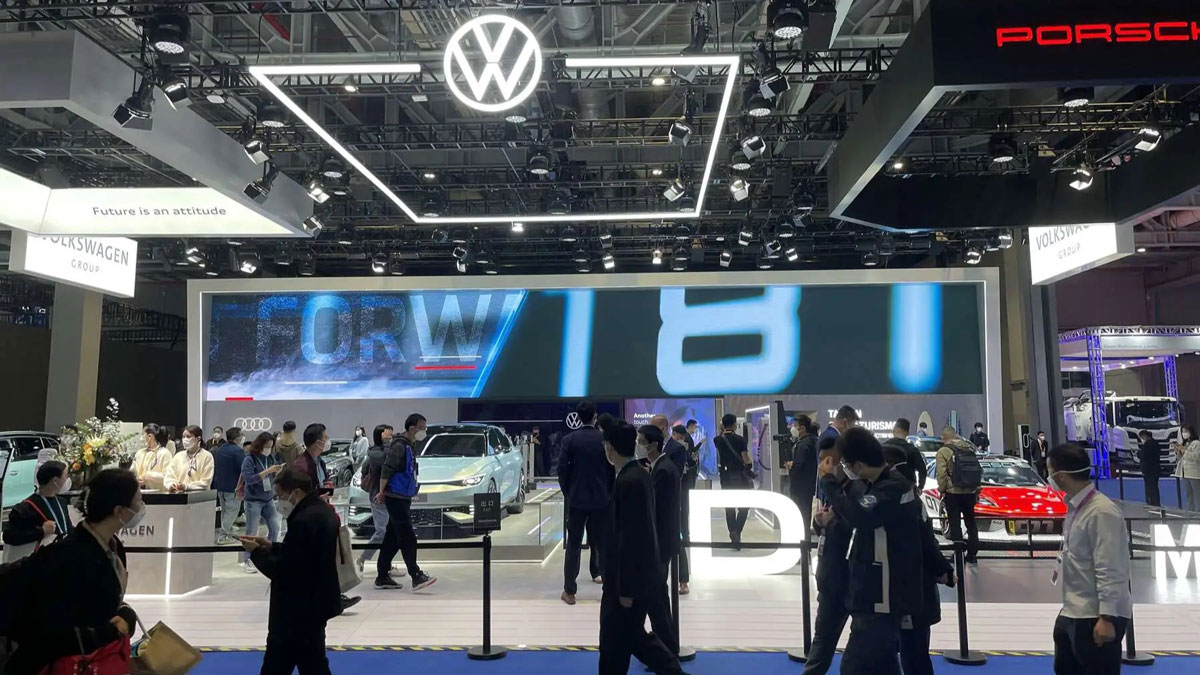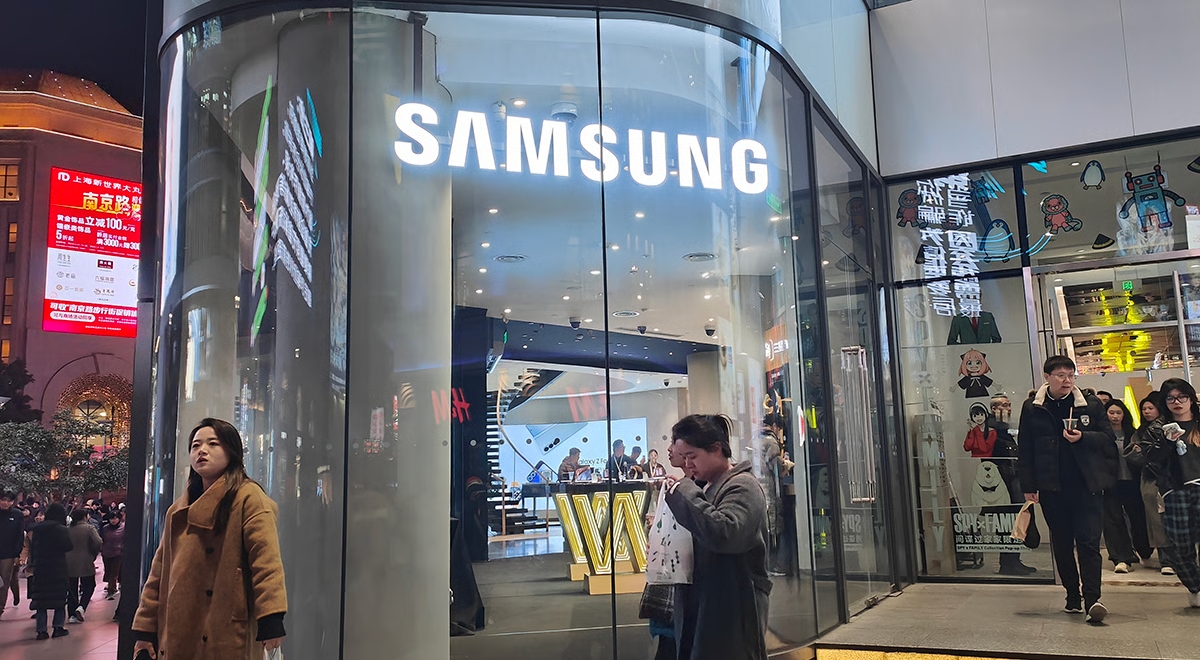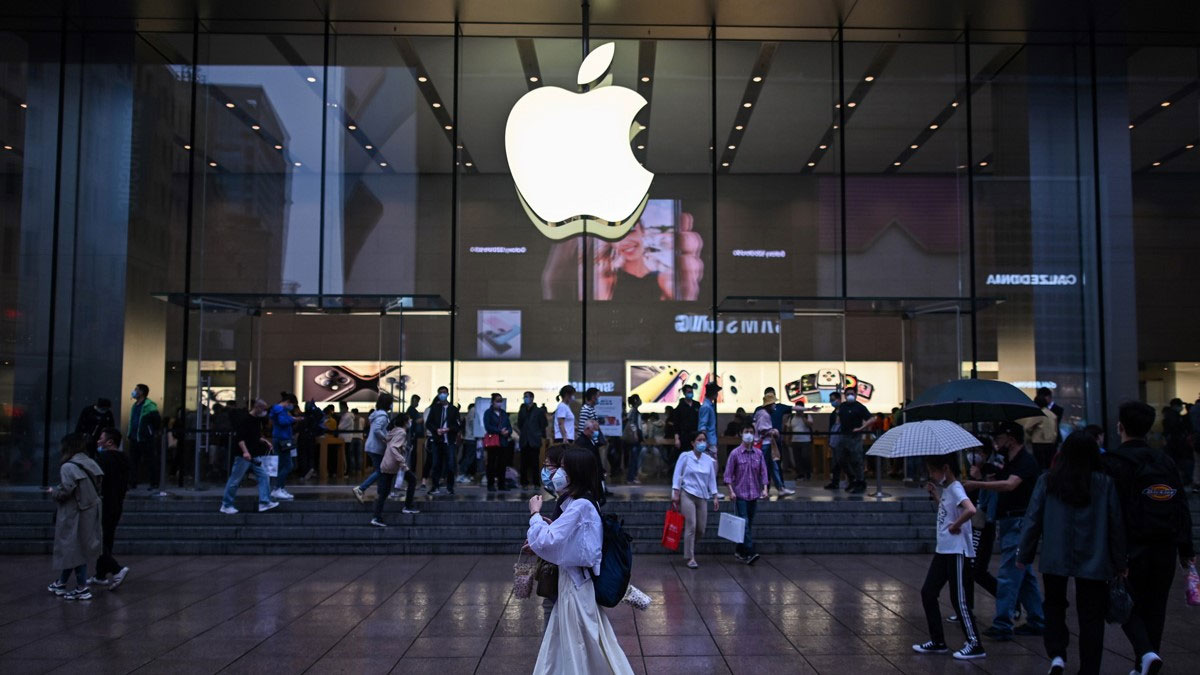Published 29 July 2025
A pioneer in fast moving consumer goods in China, P&G now faces a Chinese market with slower economic growth, changing consumer behavior, and increasing competition from both foreign and domestic competitors. Its story in the country shows how even one of the world’s most respected companies must move at China speed if it is to achieve its ambitions in China and globally.
Procter & Gamble (P&G) is one of the world’s most successful consumer goods companies. Founded in 1837, P&G sells a wide range of fast moving consumer goods (FMCGs) in over 180 countries and employs over 100,000 globally. In the year ending June 2024, P&G net sales were US$84.0 billion, net earnings were US$18.5 billion, and net earnings margin was an industry leading 17.8%. P&G accounts for roughly 20% of the global market for retail hair care, 45% in grooming, 20% in oral care, 35% in fabric care, 25% in home care, 29% in baby care, and 20% in feminine care.1
P&G’s 2024 sales trailed only Nestlé, LVMH, and PepsiCo among FMCG companies.2 It ranked 149th in the Fortune Global 500 (2025), 7th in the Wall Street Journal’s "Best Managed Companies" (2024),19th in Fortune’s "World’s Most Admired Companies" (2025), 22nd among Fortune’s "America’s Most Innovative Companies" (2025), and was listed among Time’s "100 Most Influential Companies" (2025).3
Pioneering FMCGs in China
P&G helped pioneer FMCGs in China. When it went to China in the 1980s, P&G found that disposable diapers did not exist in the nation, toothpaste was unknown in parts of the countryside, and shampoo was often sold out of vats to customers who brought their own containers. Distribution was inefficient, suppliers were insufficient, and modern advertising and consumer branding were virtually non-existent.4
P&G went to work. It started advertising to build product and brand awareness in China three years before it was allowed to sell there. It educated consumers on modern dental hygiene, the use of disposable diapers, and the benefits of other FMCGs. It upgraded local supply chains and distributors, even providing "shadow management" in many cases. It developed a supply chain and assembly capability that was soon exporting equipment to the US and Europe. It cooperated with China’s Commerce Ministry to train retailers in 10,000 villages. It pioneered advertising and brand-building in China, even bringing its foreign advertising agencies to China.5
P&G invested heavily in government relations and corporate social responsibility (CSR) in China. It built more Hope Schools than any other foreign company. It sponsored a nationwide school health program. It sponsored China’s 2008 and 2022 Olympics, and 2010 World Expo. It has been repeatedly cited as a leader in CSR and sustainability, as a desirable employer, and as a corporate citizen in China.6
My consultancy Enright, Scott & Associates estimated that by 2014 the P&G "system," including suppliers, distributors, retailers, and their employees, contributed US$11.28 billion to China’s GDP and 612,000 in employment, making P&G one of the most impactful companies in the nation.7
The market evolved
China’s FMCG industry changed rapidly in the 2010s. In response to quality problems in consumer goods, Chinese consumers shifted upmarket. By the mid-2010s, premium or super-premium products accounted for 50% of sales in several of China’s FMCG categories. This trend was only reversed with the Covid pandemic and subsequent economic slowdown that resulted in a shift to lower-priced "value brands" from 2021 through 2024.8 E-commerce accounted for 2% of China’s FMCG sales in 2012, 14% in 2017, and 33% in 2024, as China became the world’s e-commerce leader.9 Contract manufacturers emerged that allowed FMCG companies to outsource production. Chinese consumers also began shifting to local brands that appealed more to Chinese culturally.10
These developments changed the economics and competitive dynamics of China’s FMCG industry. Scale and scope barriers to entry in marketing, production, distribution, and logistics fell. Along with rapidly growing markets, the result was greater entry, finer price and geographic segmentation, and tougher competition.11 Foreign companies had pioneered several FMCG categories, but domestic brands accounted for 66% of a wide definition of FMCGs in 2012, 72% in 2018, and 76% in 2024.12
Today, Chinese FMCG consumers may be the best informed in the world, with online platforms, influencers, and discussion groups providing detailed product reviews. Chinese consumers seek to understand how the products work, demand research-backed performance, pay heightened attention to ingredients, and look for a localized and even personalized experience. Lower-tier cities and value-priced products are growth engines, while entertainment, immersion, and engagement have become watchwords in FMCG marketing.13
P&G responds
Perhaps pre-occupied by its global restructuring focused on global megabrands, P&G was late to react to changes in China. In 2015, Chief Executive Officer A.G. Lafley remarked, "We went down, the consumer went up."14 In 2017, the next CEO David Taylor called P&G’s performance in China "unacceptable" and said, "We looked at China too much like a developing market as opposed to the most discerning market in the world."15 FMCG consultants recommended that P&G catch up on localization and e-commerce to sustain its leadership.16
P&G responded. It introduced premium diapers, fabric softeners, feminine hygiene products, detergents, and toothpastes, and expanded promotion for upscale skin care brands. It enhanced speed to market, product innovation, and localization, including premium skincare products based on herbs found in ancient Chinese texts. It reduced TV advertising and embraced new technologies, big data, social media, influencer events, and online content to reach consumers. It also ramped up e-commerce activities including collaborations with popular Chinese e-commerce platforms.17
By 2023, P&G had a 70% China market share in men’s toiletries (ranking first), 33% in haircare (first), 20% in personal hygiene (first), 11% in oral hygiene (third),10% in baby personal care (second), 7% in female hygiene (third), and 5% in skincare (third).18 P&G’s share held steady in personal hygiene from 2020, but had fallen from 42% in haircare (2020) and 25% in baby personal care (2018).19 Other foreign multinationals became leading competitors in some categories and Chinese companies in others.
P&G does not break out figures for the Chinese mainland, but data in its annual reports suggest sales in Greater China (the Chinese Mainland, Hong Kong, Macau, and Taiwan) were US$5.2 billion in fiscal 2016 (8% of global sales), US$8 billion in 2022 (10%), and US$5.9 billion (7%) in 2024.20 The steep decline was attributed to a slowing Chinese economy, a shift towards value segments, price competition from Chinese competitors, and problems with P&G’s Japan-based SK-II brand, which saw its China sales plummet 34% in the second quarter of fiscal 2024 due to consumer backlash against Japanese products over release of radioactive wastewater from Japan’s Fukushima nuclear plant.21
In response, P&G streamlined its portfolio, adjusted distributor relations, doubled down on China-based innovation, expanded its online presence beyond Alibaba’s Taobao and Tmall and JD.com to Douyin (the Chinese mainland counterpart of TikTok) and lifestyle platform Xiaohongshu.22 It is repositioning its Olay brand and developing new versions of its Pantene and Head & Shoulders brands.23
P&G has not been alone in facing challenges in China. Unilever saw "mid-single-digit" percentage decline in sales in China in 2024 followed by a "high single-digit" percentage decline in sales in China in January through March 2025. In both cases, Unilever cited economic slowdowns and competitive pressures for the decline.24
Looking to the future
P&G’s global revenue grew 2% and its net income grew 1.5% in fiscal 2024. For the first three quarters of fiscal 2025, global sales were down 2% year on year while net income was up 1%.25 Meanwhile, P&G’s China sales continued their downward slide, falling 15% in the first quarter of fiscal 2025, 5% in the second quarter, and 2% in the third quarter ending March 2025.26
P&G retains a strong position in China, though its days of dominance are over. Foreign and domestic competitors have leveraged systems, business infrastructure, and personnel developed by P&G. Chinese firms have become major competitors in many FMCG categories and Chinese consumers increasingly favor domestic brands.
While they have benefited from favorable treatment from local banks, online platforms, and regulators, Chinese FMCG firms have not had the extensive industrial policy support enjoyed by high-tech sectors. Rather, lower barriers to entry, rapid evolution of the China market, heightened competitive and localization pressures, and China’s leadership in e-commerce and e-marketing have been the key factors that have challenged P&G.
The situation suggests that in FMCGs and many other industries, China is becoming a, if not the, leading-edge market, and the place where companies like P&G will need to learn in order to succeed, not just in China, but globally.
***
[1] "2024 10-K," P&G, 2025, https://assets.ctfassets.net/oggad6svuzkv/4lA5e7QkCISorQmxhQBe3X/8186cff979400f1a251e0bacb949745a/2024_form_10k.pdf.
[2] "Top 100 Consumer Goods Companies of 2024," Consumer Goods Technology, February 2025, https://consumergoods.com/top-100-consumer-goods-companies-2024.
[3] "P&G's Awards and Recognitions: Shaping Careers, Inclusion and Consumer Impact," P&G, February 11, 2025, https://us.pg.com/blogs/pg-awards-and-recognitions/; "The 100 Most Influential Companies of 2025," Time, June 26, 2025, https://time.com/collections/time100-companies-2025/; "Full List of Fortune Global 500 Companies (2025)," Fortune, 2025, https://us500.com/fortune-global-500?q=Procter.
[4] Michael J. Enright, "P&G in China," Asian Case Research Centre, University of Hong Kong, 12/524C, 2012, https://www.acrc.hku.hk/Case/Detail/901.
[5] Michael J. Enright, "P&G in China 2022," Asian Case Research Centre, University of Hong Kong, 22/732C, 2022, https://www.acrc.hku.hk/Case/Detail/1116.
[6] Enright, 2012; Enright, 2022.
[7] Michael J. Enright, "P&G's 30-year contribution to China through FDI," Hinrich Foundation, September 5, 2017, https://www.hinrichfoundation.com/media/msifrgpl/hinrich-foundation-fdi-in-china-pg-case-study-9-5-17.pdf.
[8] "Adapting to Change: The New Consumer Dynamics in China’s FMCG Sector," Kantar WorldPanel and Bain & Company, 2024, https://www.bain.cn/pdfs/202412121036454820.pdf.
[9] "China FMCG: Still Volatile—but with Signs of Hope," Kantar WorldPanel and Bain & Company, 2022, https://www.bain.cn/pdfs/202212080249504472.pdf; Kantar and Bain, 2024.
[10] Enright, 2022.
[11] Enright, 2022.
[12] Derek Deng, Bruno Lannes, and Rachel Lee, "Striving for Growth: FMCG Consumption Improves, Giving Way to Cautious Optimism for 2025," Bain & Company, June 2025, https://www.bain.com/insights/china-shopper-report-2025-volume-1/. The share figures included packaged food, beverages, personal care, and home care, a wider range than P&G’s portfolio.
[13] "Beauty: China’s beauty era: Science, scenarios, 'skintellectuals' lead," InsightTrendsWorld, May 26, 2025, https://www.insighttrendsworld.com/post/beauty-china-s-beauty-era-science-scenarios-skintellectuals-lead.
[14] Serena Ng and Laurie Burkitt, "P&G Tripped Up by Its Assumptions About Diapers in China," The Wall Street Journal, August 13, 2025, https://www.wsj.com/articles/p-g-tripped-up-by-its-assumptions-about-diapers-in-china-1439445897.
[15] Eric Zhou, "Lessons from the sales decline of Procter & Gamble in the China Market," LinkedIn, February 17, 2017, https://www.linkedin.com/pulse/lessons-from-sales-decline-procter-gamble-china-market-eric-zhou-%E5%91%A8%E6%AD%A6/.
[16] Danielle Long, "Brands must localise and adopt a local flavour in order to succeed in China," The Drum, June 11, 2018, https://www.thedrum.com/news/2018/06/11/brands-must-localise-and-adopt-local-flavour-order-succeed-china; Frank Lavin, "Can the Procter & Gamble China Model Work in the E-Commerce Era?," Forbes, April 22, 2020, https://www.forbes.com/sites/franklavin/2020/04/22/can-the-procter--gamble-china-model-work-in-the-e-commerce-era/.
[17] Enright, 2022.
[18] MarketLine Reports, "Men’s Toiletries in China," July 2024; "Haircare in China," October 2024; "Personal Hygiene in China," April 2024; "Oral Hygiene in China," April 2025; "Baby Personal Care in China," August 2024; "Feminine Hygiene in China," October 2024; "Skincare in China," May 2025; https://www.marketline.com/.
[19] MarketLine, "Haircare in China," October 2021; "Personal Care in China," September 2021; "Baby Personal Care in China," January 2020. https://www.marketline.com/
[20] "Annual Reports," P&G, various years, https://pginvestor.com/financials/annual-reports/default.aspx.
[21] Venya Patel, "P&G’s SK-II sales drop amid China boycott of Japanese brands due to Fukushima wastewater," Personal Care Insights, January 25, 2024, https://www.personalcareinsights.com/news/pgs-sk-ii-sales-drop-amid-china-boycott-of-japanese-brands-due-to-fukushima-wastewater.html.
[22] "P&G streamlines brand portfolio after China sales fall," WARC, October 21, 2024, https://www.warc.com/content/feed/pg-streamlines-brand-portfolio-after-china-sales-fall/en-GB/9990; Jessica DiNapoli, "Procter & Gamble doubles down on China’s TikTok to reverse sales slump," Reuters, November 22, 2024, https://www.reuters.com/business/retail-consumer/procter-gamble-doubles-down-chinas-tiktok-reverse-sales-slump-2024-11-22/.
[23] Daniel Foelber, "Is China Dragging Down This Dow Jones Dividend King Stock?," The Motley Fool, January 26, 2025, https://www.fool.com/investing/2025/01/26/china-dragging-down-dow-jones-dividend-king-stock/.
[24] "Annual Report-2024," Unilever, March 13, 2025, https://www.unilever.com/files/unilever-annual-report-and-accounts-2024.pdf; "Unilever Trading Statement - First Quarter 2025," Unilever, April 24, 2025, https://www.unilever.com/files/ir-q1-2025-full-announcement.pdf.
[25] "P&G Announces Fiscal Year 2025 Third Quarter Results," P&G, April 24, 2025, https://us.pg.com/newsroom/news-releases/PG-Announces-Fiscal-Year-2025-Third-Quarter-Results/.
[26] Wang Zhuoqiong, "Beauty giants adapting to Chinese preferences," China Daily, August 9, 2024, https://www.chinadaily.com.cn/a/202408/09/WS66b57280a3104e74fddb9322.html; "P&G (PG) Q3 2025 Earnings Call Transcript," Motley Fool Transcribing, April 24, 2025, https://www.aol.com/finance/p-g-pg-q3-2025-214530508.html.
© The Hinrich Foundation. See our website Terms and conditions for our copyright and reprint policy. All statements of fact and the views, conclusions and recommendations expressed in this publication are the sole responsibility of the author(s).






